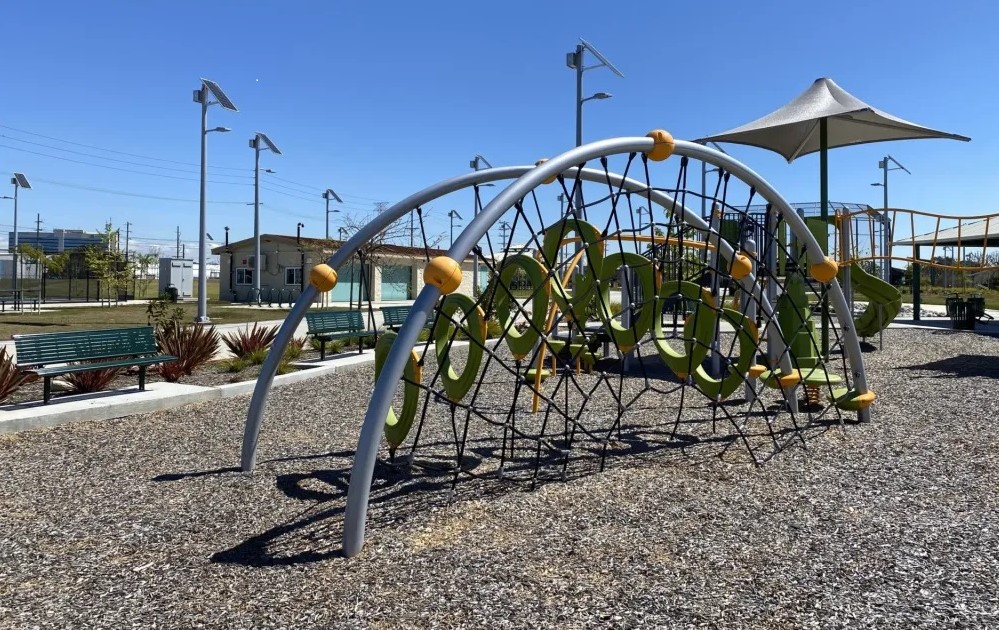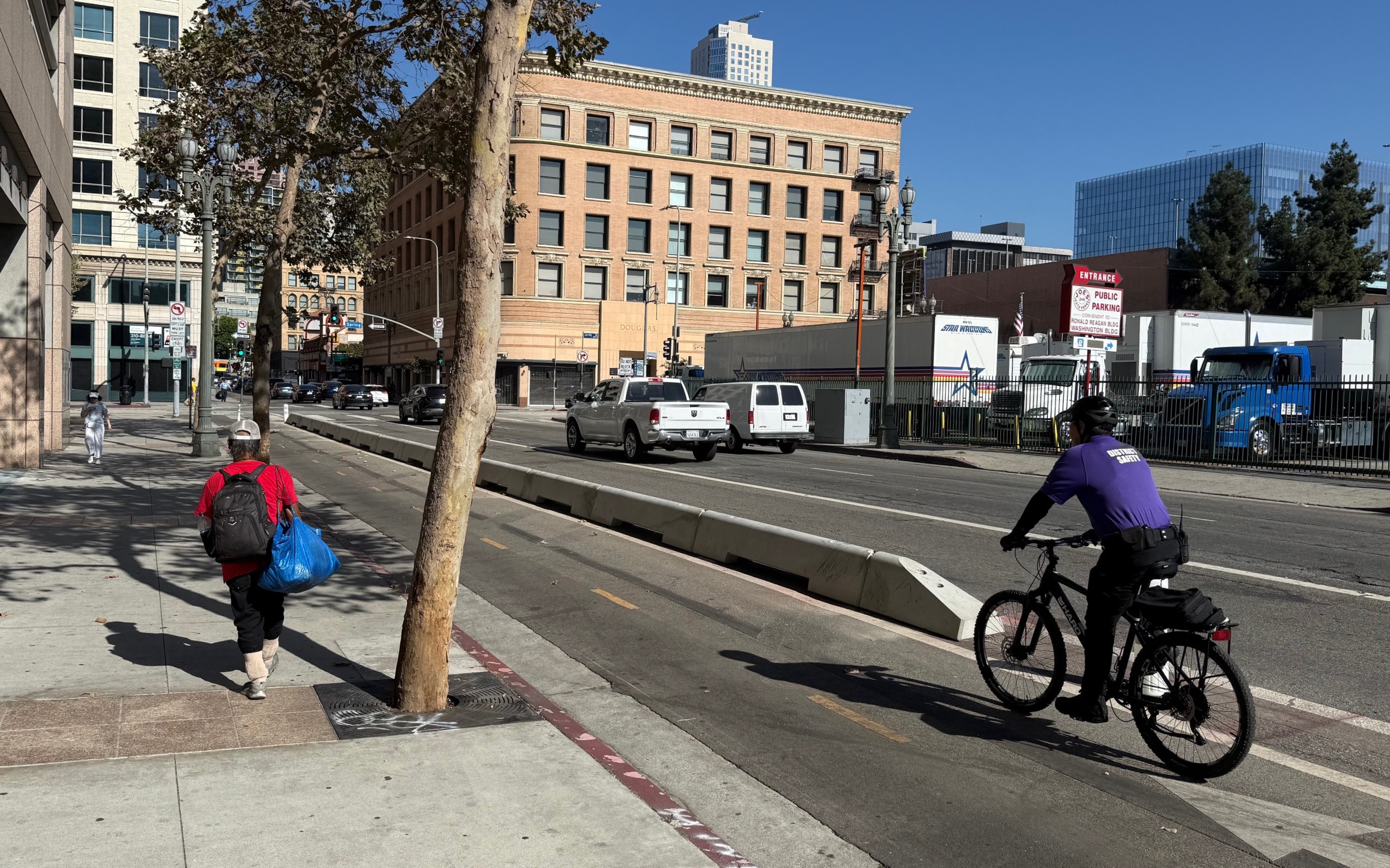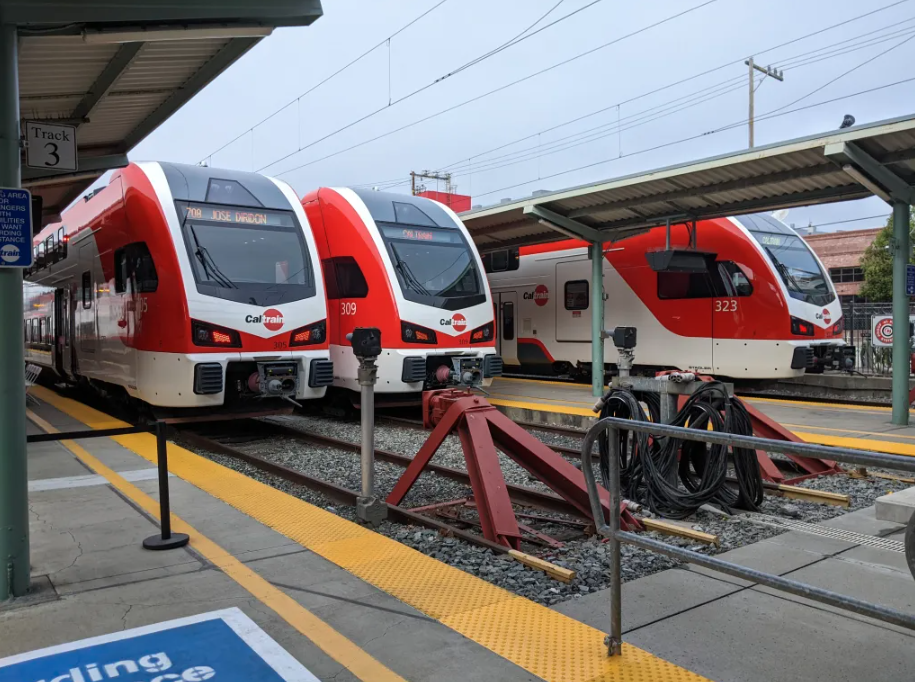 Metro Rapid map. Photo: RJM Connel/Flickr
Metro Rapid map. Photo: RJM Connel/FlickrDavid Lazarus, in one of his recent L.A. Times columns on public
transit, off-handly laments neglect of the "long-term promotion of
public transportation as a practical alternative to traveling by car".
Is
that what transit in Southern California in the modern age has had as
its goal? My long held suspicion is that transit as an alternative to
the automobile is mostly an empty slogan that officials speak of but
that as a practical matter receives little attention beyond lip
service. And the great danger is trends may actually be leading us
toward having transit use widen while officials and others aren't
preparing for the many challenges this presents.
Our
present public transit system is structured to meet two markets: peak
hour commuters and the transit-dependent population (mostly made up of
folks of modest means, seniors, the disabled and youth). Over decades
service and funding structures have been built up predicated on that
being the population it serves.
With the emergence of Metro
Rapid and the growing grid of Metro Rail services the demographic that
transit draws is widening. Which actually presents challenges, both
political and practical.
A peek at what we may be facing is
the huge spike in transit use that occurred when gasoline bolted past
$4 a gallon in 2008 -- agencies struggled to meet the demand, often
bringing out of mothballs old buses that had historically been part of
a reserve fleet.
Because nearly all purchases of transit
equipment by public agencies involve federal capital funding, rather
stringent "buy america" provisions constrain the universe of
manufactures that can bid. It can often be upwards of 24 months from
when an order is made before deliver occurs, given the limited capacity
to manufacture buses to serve the American market. Also most urban
areas are extremely difficult to facilitate expansion of bus repair and
storage facilities. Some of this is NIMBYism (folks don't want a bus
yard in their neighborhood) plus in many cases plots of land large
enough for a bus yard are few and far between (or entail the long
difficult process of building on a brownfield). While many may think a
lot more use of transit would be a good thing the transit
providers right are now are nowhere near ready to handle it.
Then one tries to contemplate where the funding would come from to have
transit as the main mode of mobility for a significant portion of the
urban population. I think that takes us to about the limits of any
possible prognostication being possible. Perhaps we need a more honest
and engaged dialogue on these issues. I certainly think we are falling
far short of that at the moment. The American landscape is evolving and
I fear we are not remotely preparing for what it will need to fulfill
its ultimate aim of better cities and better lifes for the people
therein. Transit that is good enough won't cut it.






